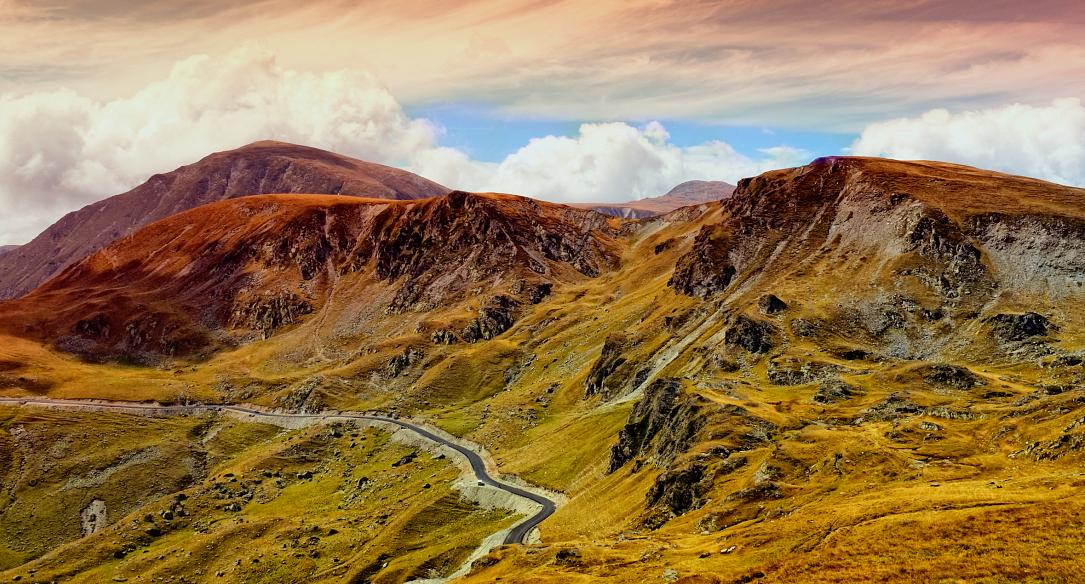Romania Photo of the Day by Dreamstime: Transalpina Road in autumn colors



High up in the Parâng Mountains of the Southern Carpathians is a road called Transalpina, which is the highest-placed paved road in Romania and one of two roads in the country that offer an unparalleled scenic route (alongside the Transfăgărășan). (Photo source - click on the number to get to the photo 27720567 © Fotografescu | Dreamstime.com)
Transalpina is approximately 148 km long and reaches an altitude of 2,145 m above sea level, opening onto a vast, sometimes arid, sometimes forested, mountain plateau.
According to Libertatea, the beginnings of the Transalpina road are still unclear. Some sources claim that it was first built at the beginning of the 2nd Century AD by Roman legions during the wars with the Dacians, which is why it is listed on historical maps as the Roman Strategic Corridor IV. According to other sources, the road was built and paved by the Germans during the First World War for their own military reasons.
Whatever its initial origin, the Transalpina was rebuilt in the interwar period and opened in 1935, when it was inaugurated by King Carol II, which is why it is also known as the King's Road.
After the Second World War, the Transalpina was not maintained for a long period of time, leaving it to deteriorate.
The Transalpina was modernized and officially opened to road traffic in August 2015, and since then, thousands of travellers have had the opportunity of crossing the mountains and admiring the beauty and wildness of the landscapes on either side of the road.
In most cases, however, traffic on the Transalpina is only allowed from June until October each year. From November 1 to June 30 the route is closed, and then only during daylight hours, with a maximum speed of 30 kilometers per hour, as the route is a dangerous one.
Several ways to get to Transalpina Road are outlined here.
Some places to visit along the way: Lotru River, Obârșia Lotrului Monastery, Vidra Lake, Oașa Lake and Monastery, Rânca and Voineasa Resorts, Polovragi Cave, Olteț Gorge, Muierilor Cave.